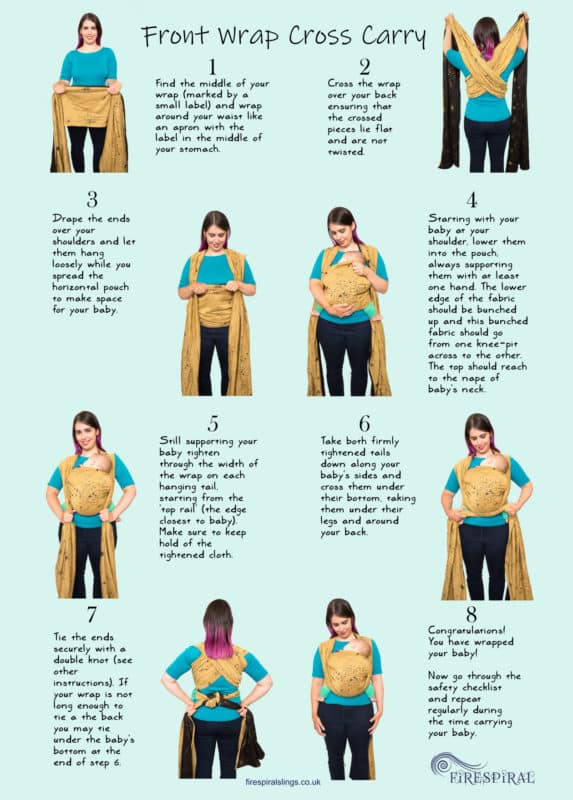Using Woven Wraps
Front Wrap Cross Carry (FWCC): Wrapping Tutorial
This guide shows you how to tie a Front Wrap Cross Carry (FWCC) and lots of alternate variations of the carry too. It also includes specific information about carrying newborns, toddlers, nursing in the wrap and troubleshooting the carry to get it perfectly comfortable.
The Front Wrap Cross Carry (commonly abbreviated as FWCC) is often the first carry that people will learn, and there are good reasons for that!




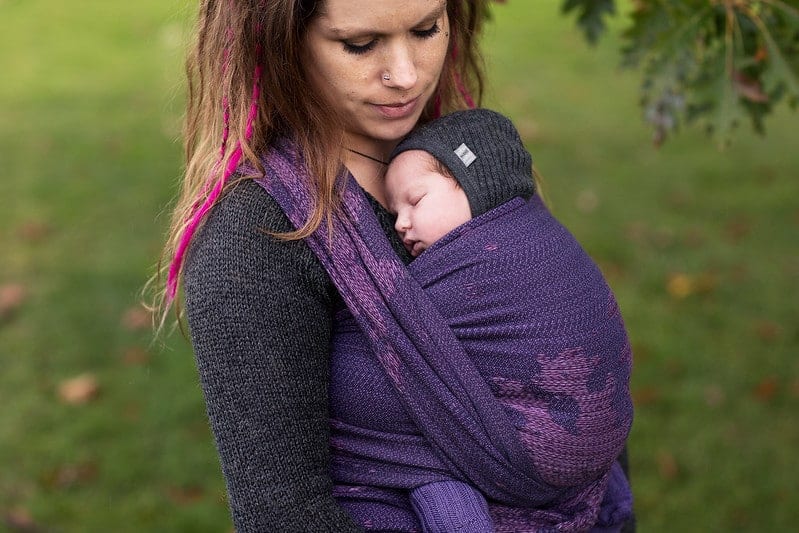
- Suitable from birth to toddler, offering full body support to newborns and good weight distribution of older children.
- Stays comfy for a long time. It has multiple layers that offer support over hours- great for when your little one is napping in the wrap.
- Supportive of your body too. It is a two-shouldered carry, so the weight is distributed evenly throughout the whole of your back. When tightened correctly, the weight of your baby shouldn’t be carried on your shoulders.
- Simple to learn. You partially wrap the cloth around yourself and adjust it before you put the baby into the carry. There are no complicated manoeuvres, or times when your baby doesn’t feel fully supported by either your arms or the cloth.
- Can be a good carry to breastfeed in, once you are comfortable with both the techniques of wrapping and nursing.
- Older babies have a great range of vision and upper body movement but can still snuggle into you when they’ve had enough or want a nap.
- Adaptable: there are several simple alterations you can make to the basic carrying technique, so you can use a shorter or longer wrap if needed.
Does that sound good? Well here’s How to do front wrap cross carry!
Before you start:
You will need a base-size woven wrap for this. Everyone’s base size is slightly different, depending on your size, baby’s size and your wrapping technique/ability. You can work out your base size here, but as a quick start, the average base size is around a 6 or 7.
If it makes you feel more confident at first, then wrap near to a soft surface (bed or sofa), or practice with a doll. Remember that a toy will not feel as natural to wrap with, and in many ways your baby will actually be easier to wrap than a teddy, so don’t be put off!
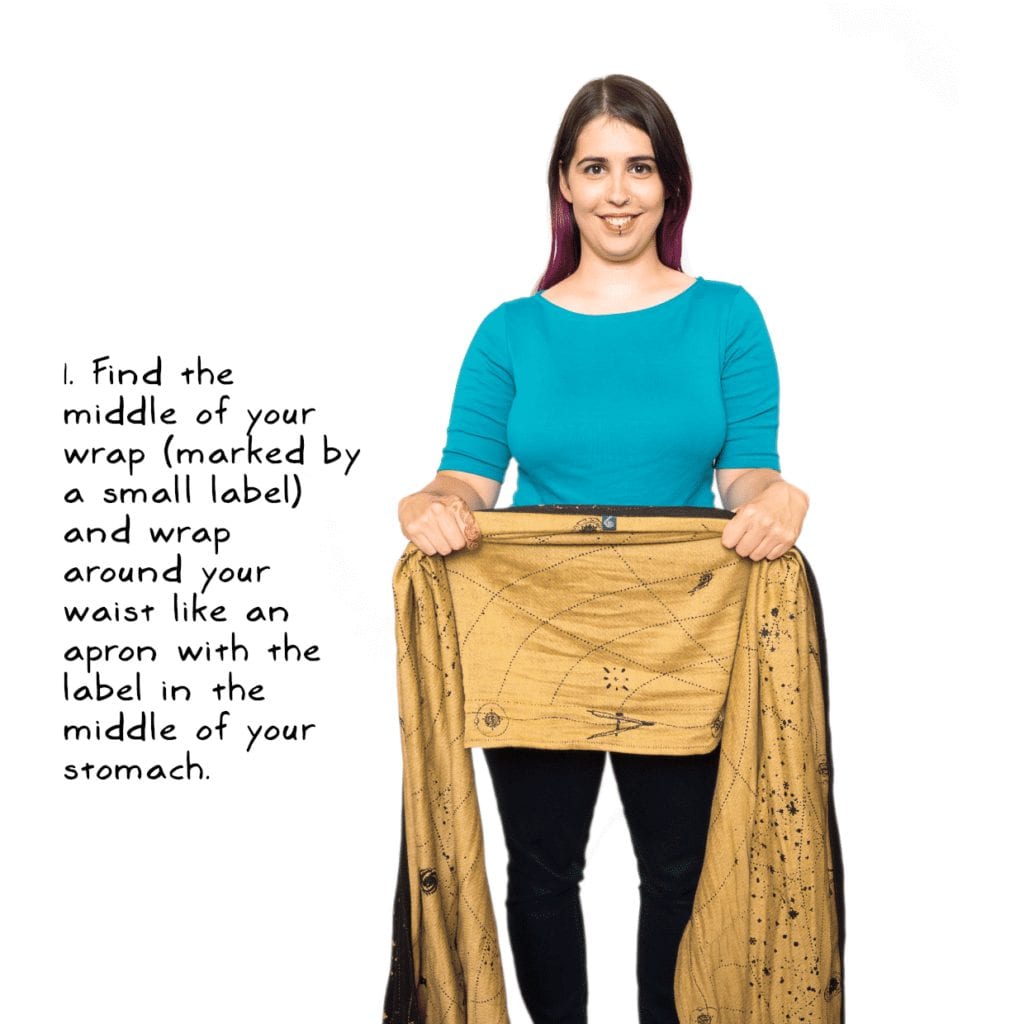
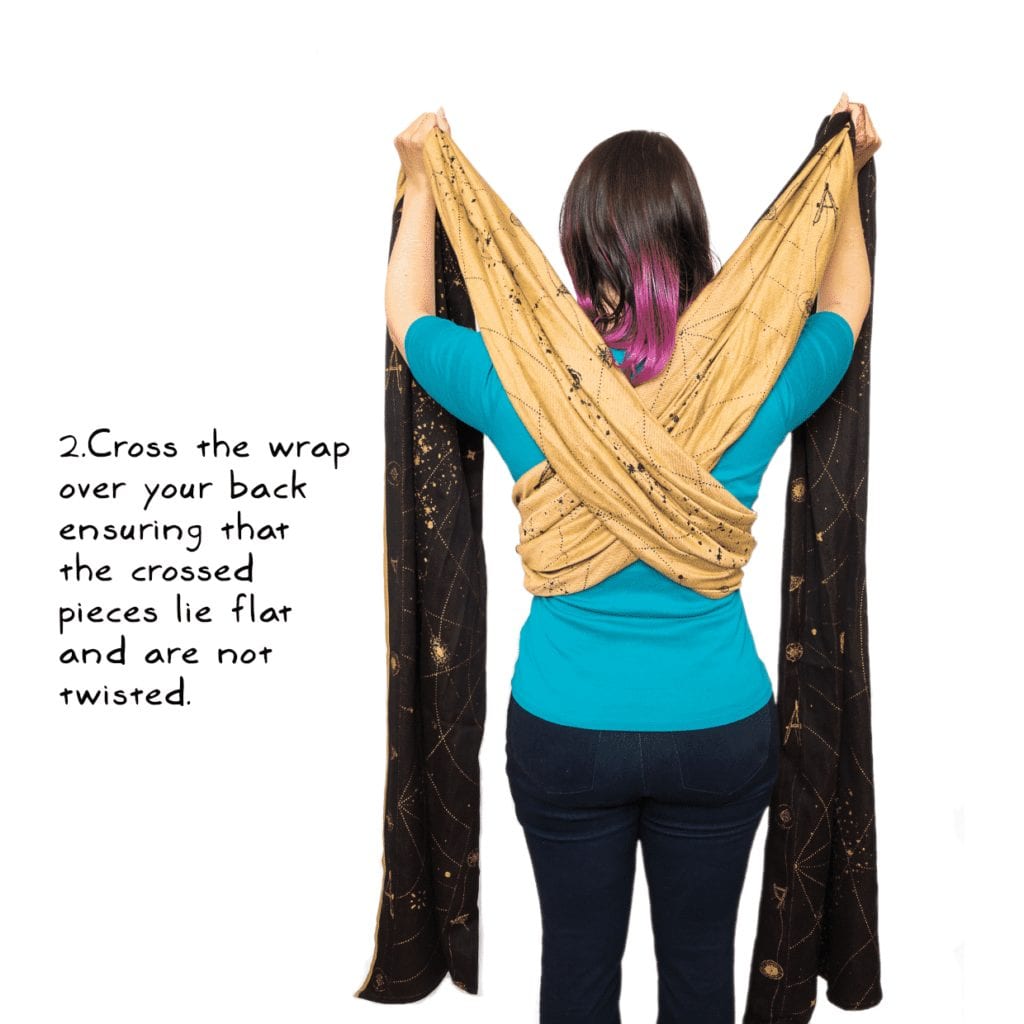
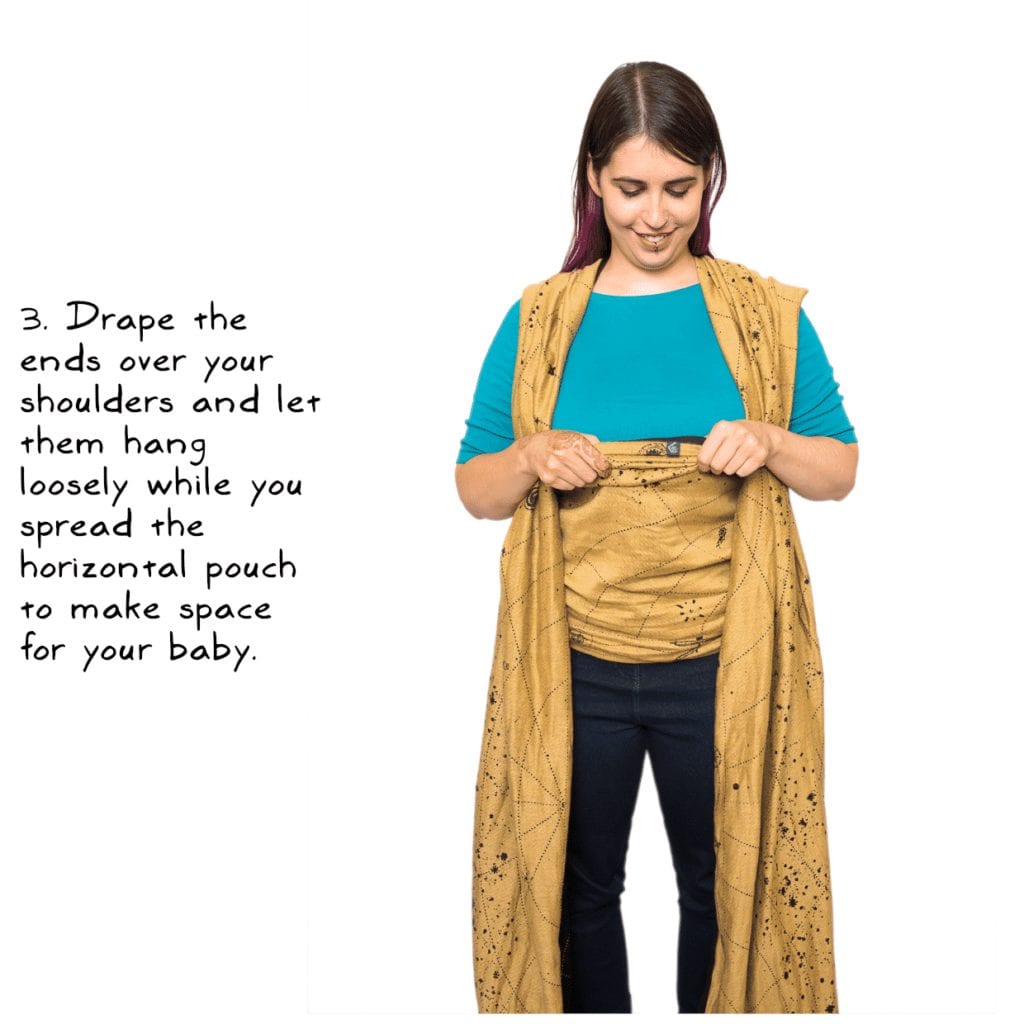
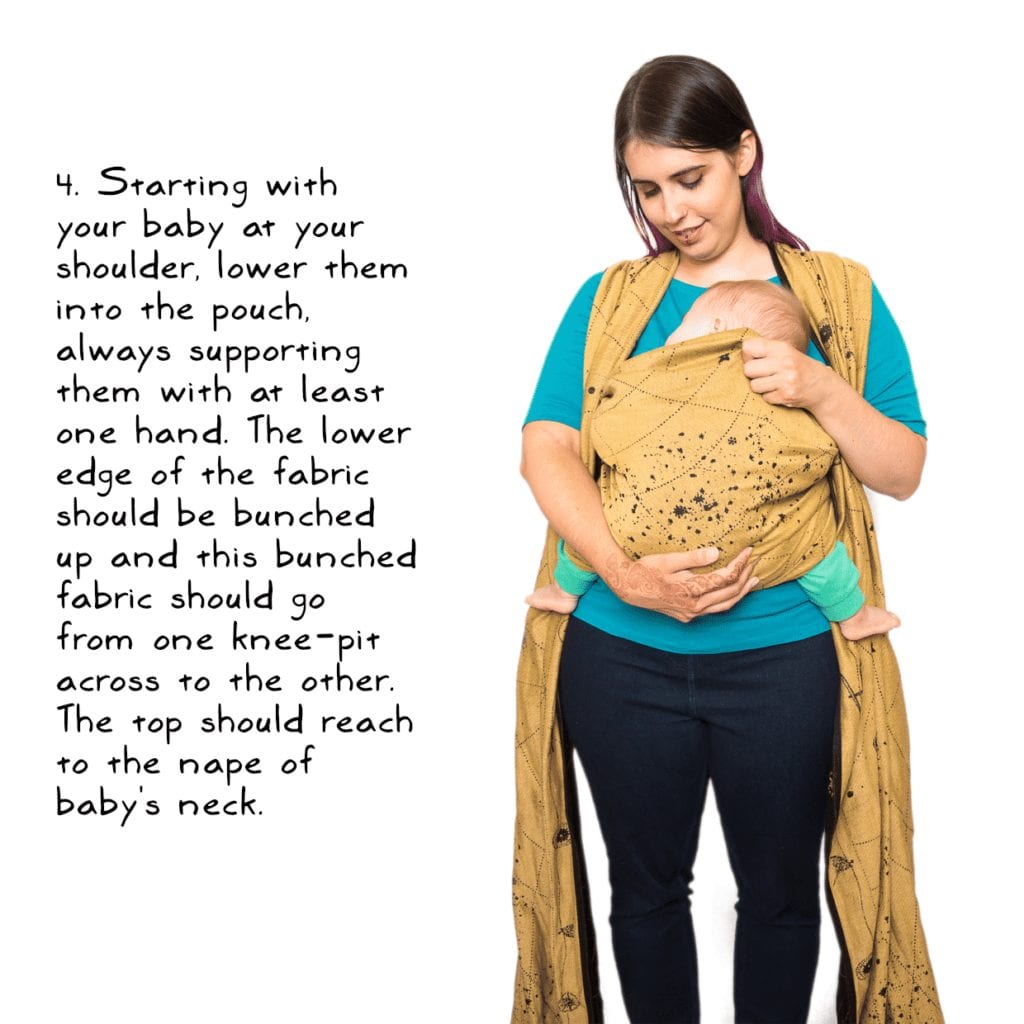
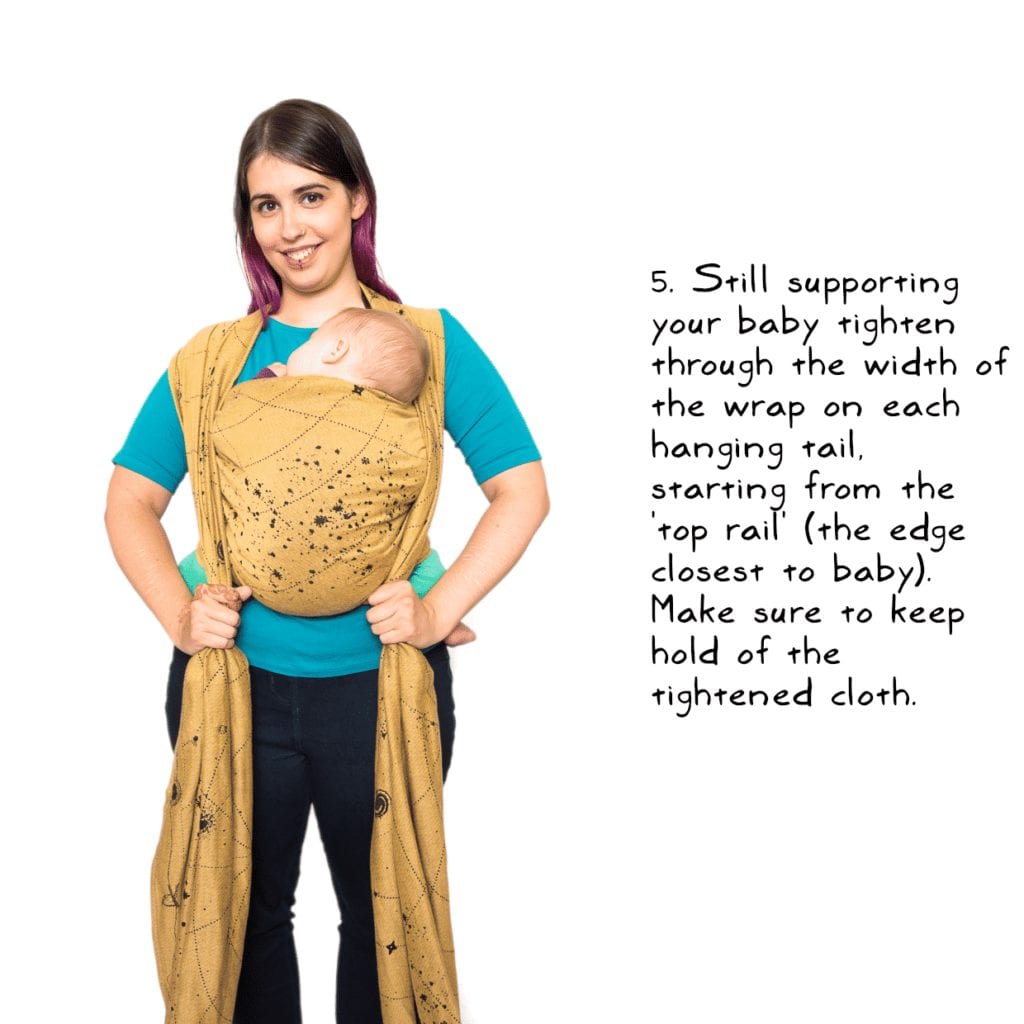
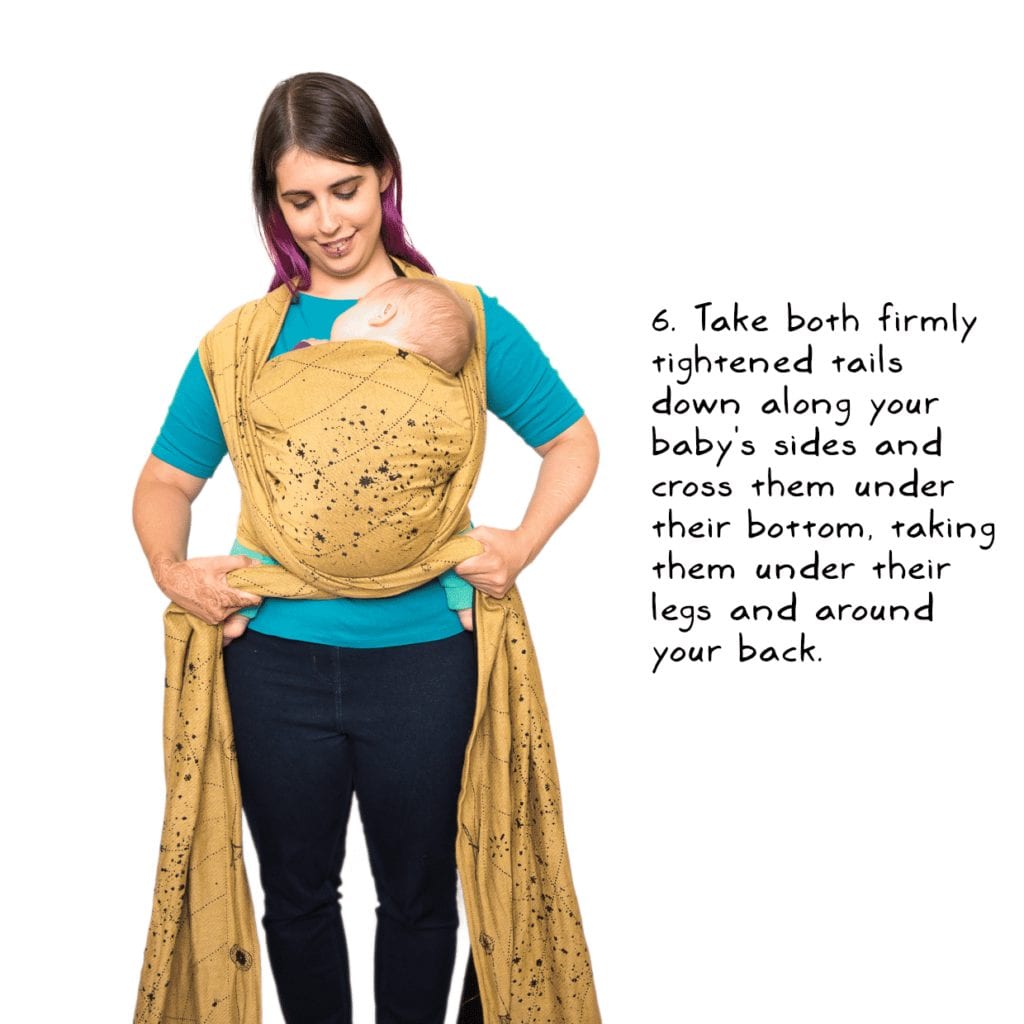
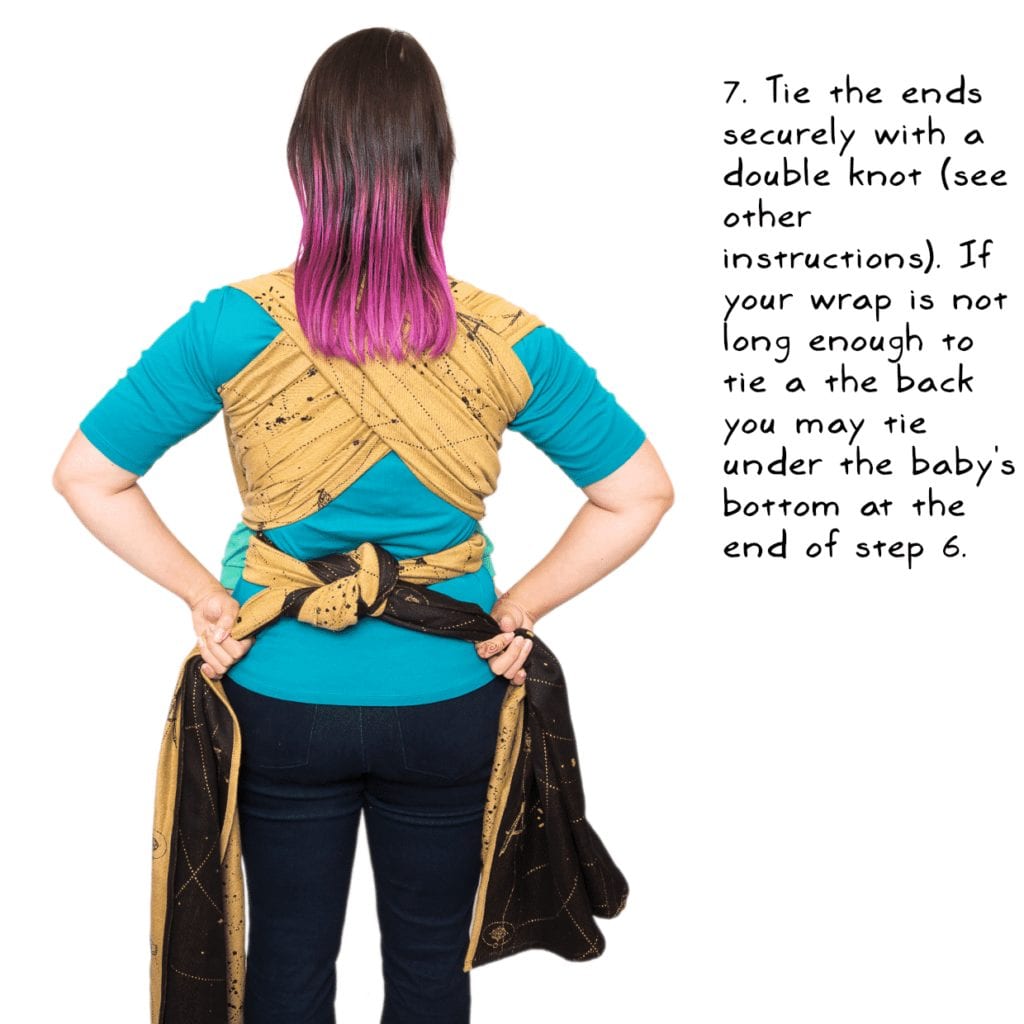
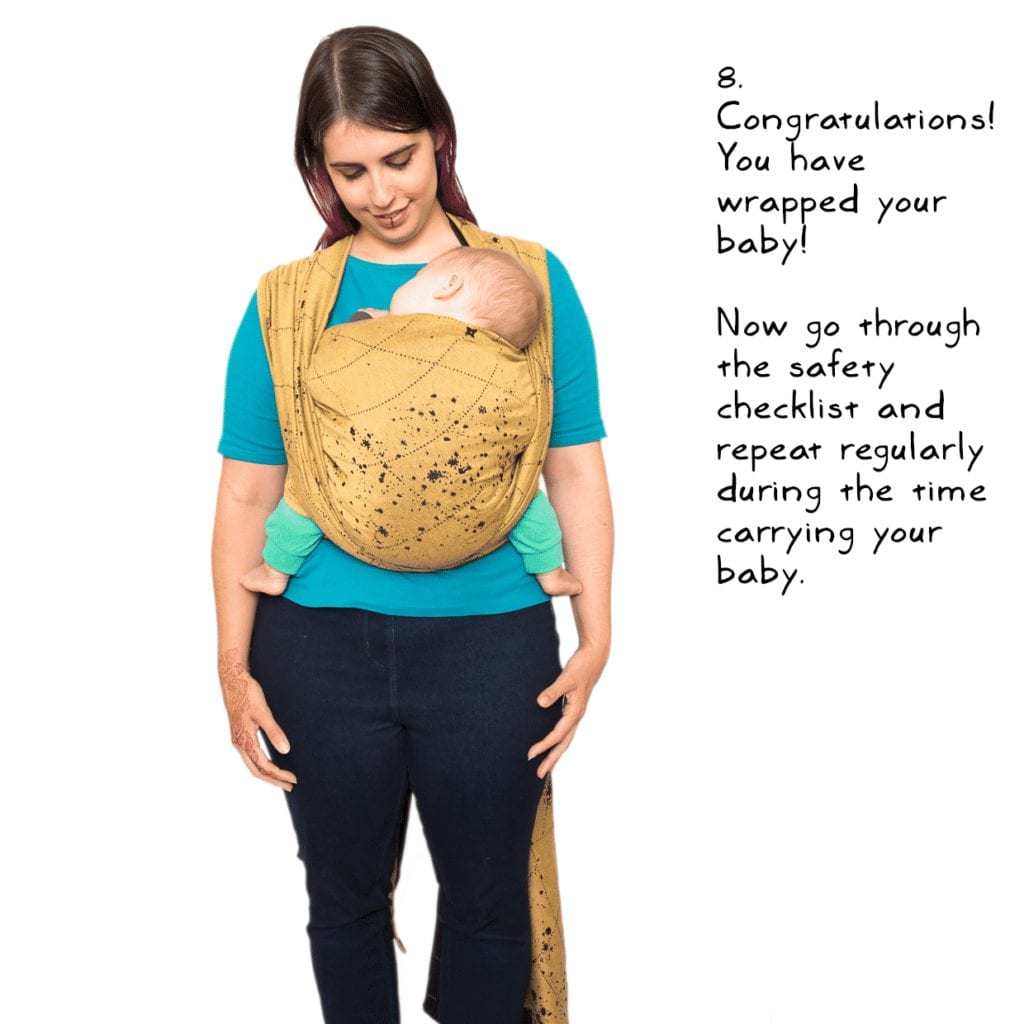
Some helpful tips for getting this carry right.
- Get the horizontal pass really snug before you put the baby into it. The horizontal band of cloth that goes across your baby’s back needs to be nice and tight, and the right height from the start, because it will transfer their weight through your whole torso and stop them feeling heavy. You shouldn’t rely on the passes under the bum to be holding them up.
- Tighten the carry as you’re going along, not just at the end. You need to get rid of any slack cloth that might be trapped, otherwise, that slack will work its way through the cloth and lead to sagging. If you leave the carry too loose, then try to tighten it up at the end, by pulling the two tail passes that hang down tighter and tighter, then you’ll end up transferring all of your baby’s weight onto your shoulders instead.
- Pull the cloth up and out to tighten, rather than forwards over your shoulder, otherwise, it won’t move freely.
Front Wrap Cross Carry (FWCC) with a newborn
The FWCC is great for newborns and is a newborn base-size carry. You can make some small changes to help keep the wrap comfy and fit their tiny body better. You also need to make good, regular checks of their positioning, as newborns can’t control and adjust their bodies in the same way as older babies can. Some brand-new babies will have their legs tucked right up still in the same position as they were in the womb! The Lexi-twist takes the passes away from your newborn’s little legs and avoids putting any pressure on them. You can drop this step when their legs are bigger and sitting in a more mature, less scrunched-up position.
Nursing in a Front Wrap Cross Carry (FWCC)
This video shoes how to adjust the FWCC so that you can nurse your baby in it. Skip to 3:38 for that part. Remember that breast/chestfeeding in a woven wrap is not a 100% hands-free experience, but it will offer you plenty of support. You can read more about nursing in a woven wrap here.
Tips for carrying bigger/taller babies in a Front Wrap Cross Carry (FWCC)
Front Wrap Cross Carry (FWCC) Variations
The FWCC can be varied to use different lengths of wrap or just to change it up a bit!
Below is an alternative ‘pond’ finish to a regular FWCC. This carry was tied with a base+1 wrap, but you could use your regular base size too.
Anne’s FWCC is knotless and doesn’t tie round your waist which some people find more comfortable.
There are alternative variations to the FWCC that can be tied with a much shorter wrap.
The Front Wrap Cross Carry (FWCC) tied under bum (TUB) and FWCC tied at shoulder (TAS) can both be done with a base -2 size wrap. Essentially the same as the FWCC, the TUB version just ties under baby’s bum rather than being passed under their legs and tying behind your back. The TAS version starts off centre, with one long and one short tail coming over your shoulders. The long tail travels under baby’s bum and then ties with a slipknot at your shoulder.


The semi-FWCC can be tied using a base -3 or base -4 size wrap. It starts off centre and ends up with only one shoulder pass, but the 2nd reinforcing pass makes it incredibly supportive, and a great, comfy front carry with a short wrap that rivals the full FWCC!
Click here to visit the SEMI FWCC WRAPPING TUTORIAL
